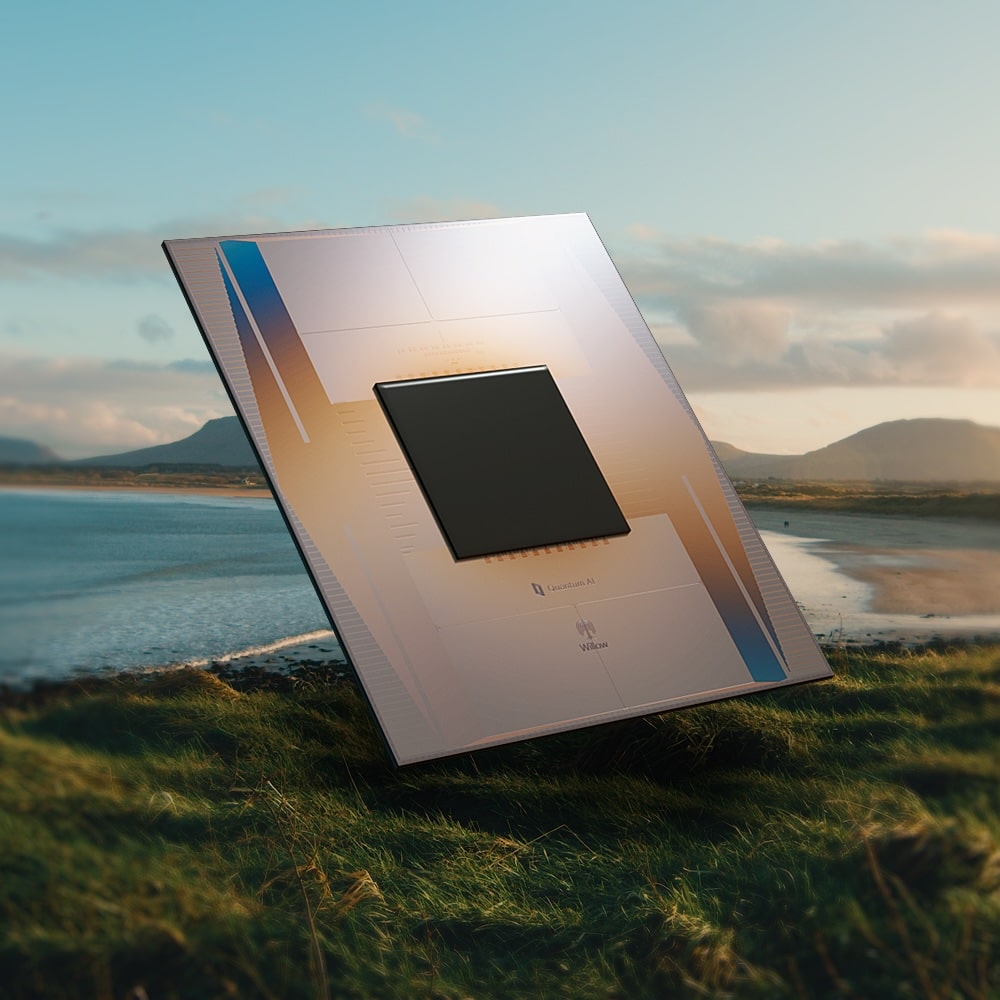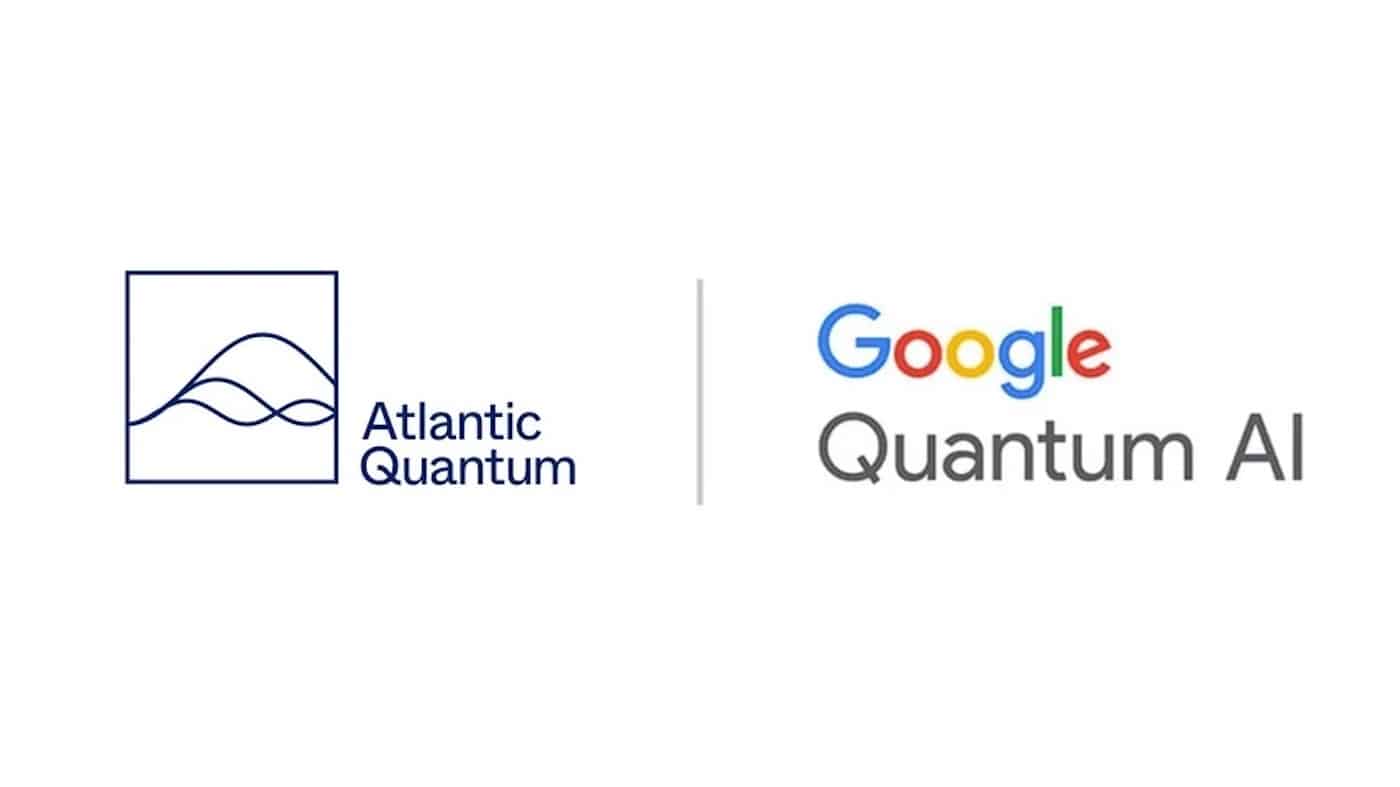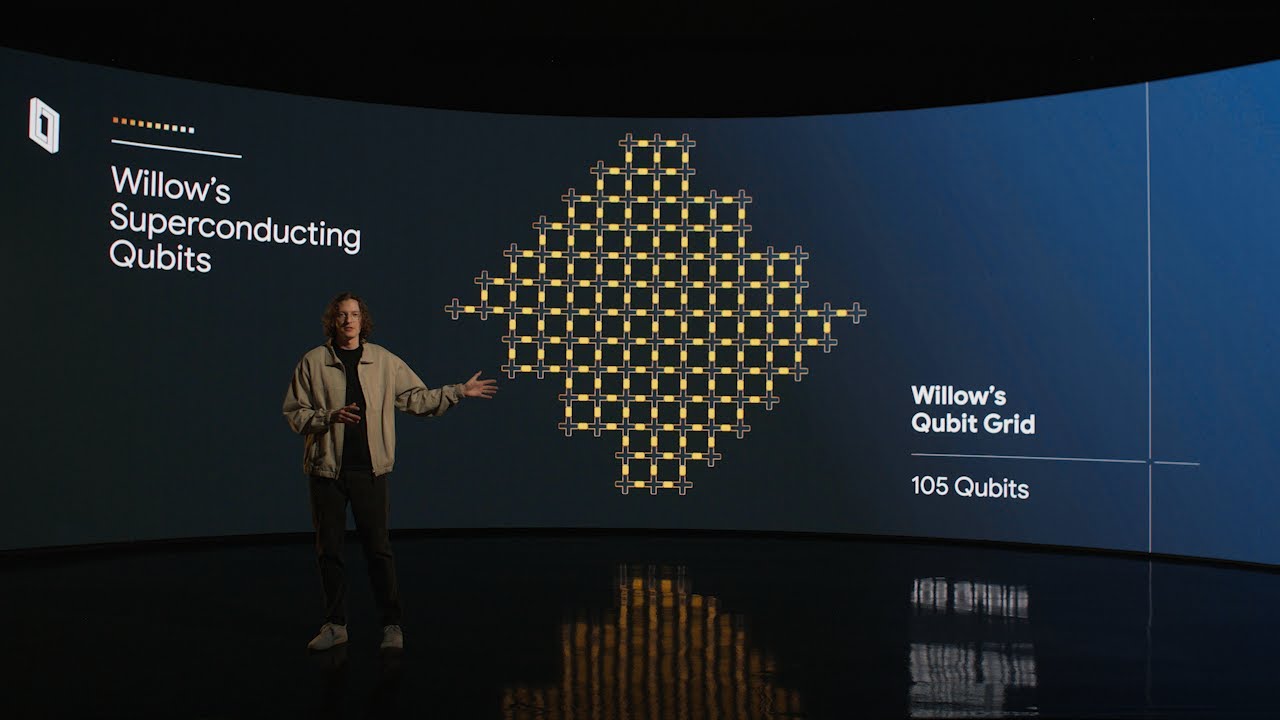Twelve years after its founding, Google Quantum AI remains committed to its original goal: building a useful quantum computer capable of solving problems that are currently intractable. Two recent announcements reinforce this ambition. On one side, the integration of the Atlantic Quantum team, an upstart founded at MIT, which provides a modular chip stack with superconducting control electronics integrated within the “cold stage” of the cryostat—a design aimed at scaling up the number of qubits without increasing cabling complexity. On the other side, the results from Willow, Google’s latest quantum chip, demonstrate exponential error reduction as system size increases and a “beyond classical” advantage in the benchmark of random circuit sampling (RCS): a task completed in less than five minutes that would take a supercomputer about 10^25 years to finish.
The first move —bringing in a team focused on highly integrated hardware— tackles the how of scaling. The second —a “below threshold” error correction demonstration— addresses the why it’s been so difficult to achieve until now. Together, they draw a clearer roadmap toward that large-scale, error-corrected quantum computer that the industry has been pursuing for nearly three decades.
Atlantic Quantum: electronics inside the cold to scale without wiring chaos
The addition of the Atlantic Quantum team shifts focus to a well-known bottleneck inside quantum machines: the tangle of connections linking the room-temperature environment to the qubit chip confined at millikelvin temperatures. Their approach —placing control electronics on the “cold stage” and combining them modularly with the qubits— promises reducing latencies, increasing density, and simplifying scaling. In a context where each extra ten qubits can require dozens of microwave and control lines, bringing electronics closer to the processor core is not just a technical preference; it’s an industrial necessity.
Google frames this integration as an accelerator for its roadmap—which not only targets more qubits but also better qubits and, crucially, logical qubits that are robust and composed of many physical qubits. The goal is not a standalone demonstration but a continuous path toward large-scale error correction and, subsequently, practical applications.
Willow: “below threshold,” in real time and with overwhelming RCS advantage
The announcement of Willow is supported by a publication in Nature and two significant claims:
- “Below threshold” error correction. Until now, increasing the number of qubits typically led to higher errors due to decoherence and interference. With Willow, Google observes the contrary in 3×3, 5×5, and 7×7 physical qubit grids: scaling reduces the effective error rate by half. This is the foundational promise of quantum error correction: if gate fidelity, readout, and coherence times surpass a certain threshold, increasing the code (more physical qubits per logical qubit) exponentially reduces errors. Willow demonstrates this, along with two associated milestones: real-time correction — essential for computational stability — and a “beyond breakeven” result, where protected arrays outperform individual qubits, providing strong evidence that correction improves system performance.
- A “beyond classical” advantage in the standard benchmark. In RCS, a test designed to stress the ability of classical computers to simulate deep random circuits, Willow performed a computation in <5 minutes> estimated to require 10^25 years on the most powerful supercomputers today. Google notes that the calculations assume conservative scenarios (ideal secondary memory access, optimistic parallelization), and expects classical systems to improve—just as they did after the 2019 announcement; yet, the gap continues to grow doubly exponentially as quantum processors scale.
Beyond the slogan, the message is practical: it’s not just about counting qubits. It’s about a system —architecture, fabrication, calibration, single- and two-qubit gates, reset, measurement— functioning cohesively. Willow, manufactured at the Santa Barbara facility specifically dedicated to quantum, features 105 qubits, T1 (relaxation time) near 100 µs — approximately 5x the previous generation—and improvements in gates and readout that underpin the algorithmic results (correction and RCS), the only measures capable of evaluating system performance rather than isolated indicators.
Quality over quantity: the significance of Shor’s threshold
Quantum error correction is not just an aesthetic add-on; it’s the engine that must propel the shift from noisy prototypes to useful computing. The idea — introduced by Peter Shor in 1995— is to group many physical qubits into a logical qubit and detect/correct errors without “looking” at the quantum information. But it only works if hardware crosses a certain threshold: below it, adding more protection worsens; above it, more protection exponentially improves.

“Below threshold” with Willow means, in simple terms, that adding qubits to the code improved the fidelity of the logical qubit, and that this improvement held up as the system scaled from 3×3 to 5×5 and 7×7 grids. Along with real-time correction and the beyond-balance achievement, it signals that the field has been aiming for decades: logical qubits scalable in superconductors are possible.
What’s next? From benchmark to practical use
Google recognizes that the next step isn’t simply enlarging RCS; instead, it’s crossing two previously separate goals: demonstrating “beyond classical” computation and, at the same time, making it practically useful. So far, progress has come through two pathways:
- RCS: an extremely demanding benchmark for classical computers, with no known practical application.
- Quantum simulations of physical systems: scientifically valuable but still reachable by supercomputers.
Willow aims to bridge these worlds: algorithms that no longer can be replicated on classical machines, with relevance for chemistry, materials, optimization, energy, or, in the medium term, AI. The group emphasizes that Quantum AI is named so deliberately: advanced AI will benefit from quantum computing—both to generate data beyond classical reach and to train and optimize architectures or model systems where quantum mechanics is the very dynamics of the problem.
Educationally and community-wise, Google invites researchers and developers to explore its open resources — including a Coursera course on error correction— and to get involved in creating algorithms that leverage these scale jumps.
A lab with its own manufacturing facility
One of the less visible but critical aspects of this announcement is the factory. Willow was developed in a newly built facility in Santa Barbara dedicated exclusively to quantum manufacturing, a resource possessed by very few groups worldwide. The implicit message: system engineering is what differentiates chips with good isolated numbers from processors that maintain performance when everything is activated together. In quantum systems, each “strength point” (two-qubit gates, readout, T1/T2 times) worsens unlinked without co-integration; optimizing the whole is, literally, the task at hand.
Detailed milestones: from logical qubits to logic gates
In its roadmap, Google’s team sets as milestone four the creation of a logical gate between logical qubits with low error rates. It’s not enough to keep a logical qubit stable; we must control it to perform universal gates with sufficient fidelity. This step could unlock the first application involving error correction. Willow doesn’t close this chapter but brings the test point closer, and with Atlantic Quantum’s arrival, control electronics and modularity become increasingly central to the design.
A foot in the lab and another in industry
Google emphasizes its investment in the future of quantum computing with a vision of societal impact. The examples sound like a familiar script: drugs discovered with models capturing real quantum interactions, batteries optimized from first principles, materials for fusion and renewable energies. The timing—when will it be “useful and commercially relevant”—remains a question without a nuanced answer. But these past weeks’ two core movements —hardware that reduces errors through scaling and architectural integration of control and qubits— signal that the path is more than just a promise.
A fact, a factory, and a new team
Perhaps a simple summary that any non-expert reader can retain:
- Fact: Willow proves that more qubits (well-organized) lead to fewer errors—the opposite of what laboratory quantum had us believe—and solves in minutes a test that would take a supercomputer 10^25 years.
- Factory: the chip is produced in a dedicated manufacturing line for quantum hardware, where improvements in materials, processes, and calibration benefit the entire system.
- Team: Atlantic Quantum joins to scale with cold electronics and modularity, practical ingredients for advancing from hundreds to thousands (and millions) of useful qubits.
The rest will be a matter of systematic effort, perseverance, and — as once a field pioneer said — more engineering than magic.
Frequently Asked Questions
What does it mean that Willow is “below the threshold” in quantum error correction?
It means that as you increase the code size (more physical qubits per logical qubit), the error rate of the logical qubit decreases exponentially. This is the necessary condition for adding protection to actually improve the system. Below the threshold, added protection worsens; above it, more protection exponentially enhances.
Why does the benchmark of random circuit sampling (RCS) matter if it has no direct application?
Today, RCS is the standard test to verify that a quantum processor does something that a classical computer cannot within reasonable time. It doesn’t solve a practical problem but provides a comparative measure of “beyond classical” performance. The next challenge is to demonstrate useful quantum advantage: relevant tasks that are also beyond classical reach.
What does the Atlantic Quantum team’s integration bring to Google Quantum AI?
Atlantic Quantum is working on a modular chip stack that combines qubits with superconducting control electronics within the cryogenic environment. This co-integration reduces latencies and wiring complexity, paving the way for scaling superconducting hardware with better signal-to-noise ratios and lower operational complexity.
When will commercial applications of error-corrected quantum computers be available?
No fixed date exists. The “below threshold” demonstration and advances in RCS shorten the path toward logical qubits and low-error gates — the fourth milestone in the roadmap. The goal is for the next generation of experiments to combine beyond-classical advantage with practical relevance in fields like chemistry, materials, energy, or AI.
More information at Quantum Google


